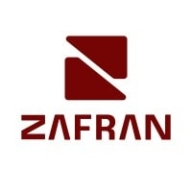


Orca Security and SentinelOne Singularity Identity compete in the cybersecurity category, focusing on cloud and identity protection respectively. Orca Security seems to have the upper hand due to its comprehensive cloud management capabilities.
Features: Orca Security offers cloud environment visibility without direct machine access using SideScanning technology. It simplifies deployment and prioritizes tasks efficiently. SentinelOne Singularity Identity focuses on threat detection and identity protection using behavior-based analytics. It provides a unified view of security and has strong customer support.
Room for Improvement: Orca Security can improve real-time risk assessments and expand beyond cloud environments to physical data centers. Users seek better remediation options and easier integrations with non-standard systems. SentinelOne needs to improve endpoint management, offer better integration options, and enhance first-level support. Customers also want features like faster support and web filtering.
Ease of Deployment and Customer Service: Orca Security as a fully cloud-based solution provides straightforward deployment and swift technical support. It excels in real-time communication with developers. SentinelOne offers deployment flexibility with its on-premises adaptability but faces challenges with support speed and effectiveness.
Pricing and ROI: Orca Security is valued for its broad feature set included without extra costs, ensuring quick ROI by replacing multiple tools. Its high list price should be considered by smaller businesses. SentinelOne offers a cost-effective package with a competitive price but users note annual price increases without new features.



Zafran Security integrates with existing security tools to identify and mitigate vulnerabilities effectively, proving that most critical vulnerabilities are not exploitable, optimizing threat management.
Zafran Security introduces an innovative operating model for managing security threats and vulnerabilities. By leveraging the threat exposure management platform, it pinpoints and prioritizes exploitable vulnerabilities, reducing risk through immediate remediation. This platform enhances your hybrid cloud security by normalizing vulnerability signals and integrating specific IT context data, such as CVE runtime presence and internet asset reachability, into its analysis. No longer reliant on patch windows, Zafran Security allows you to manage risks actively.
What are the key features of Zafran Security?
What benefits can users expect from Zafran Security?
In industries where security is paramount, such as finance and healthcare, Zafran Security provides invaluable protection by ensuring that only exploitable vulnerabilities are addressed. It allows entities to maintain robust security measures while allocating resources efficiently, fitting seamlessly into existing security strategies.
At Orca Security, we’re on a mission to make it fast, easy, and cost effective for organizations to address critical cloud security issues so they can operate in the cloud with confidence.
Key Platform Features:
Agentless: Complete, centralized coverage of the entire cloud estate, without the need for installing and configuring agents or layering together multiple siloed tools. Full visibility of cloud misconfigurations, vulnerabilities, workload protection, malware scanning, image scanning, file integrity monitoring and more.
Asset Inventory: Get a complete inventory of all your public cloud assets, including detailed information on installed OSes, software, and applications, as well as data and network assets such as storage buckets, Virtual Private Clouds (VPCs), and Security Groups.
Attack Path Analysis: Visualize attack vectors to critical assets or crown jewels. See which assets are susceptible to lateral movement, assume roles, privilege escalation, and more.
Risk Prioritization: Prioritize the 1% of risks that matter the most, based on impact scores. Secure the vulnerabilities and misconfigured targets (critical assets) and eliminate the potential risks residing on the attack paths to those targets.
Cloud Threat Detection: Monitor for malicious activity within your entire cloud estate. Be aware of detected threats, user behavior anomalies and more.
Breach Forensics: Log every change and all activity into a central repository for investigation procedures to confirm or deny entry and compromises within the cloud estate.
Cloud To Dev (Shift Left): Orca’s built-in shift left capabilities enables DevOps to focus more security attention earlier in the CI/CD pipelines. Security teams are able to trace a production risk (misconfiguration or vulnerability) directly to the original source code repository from which it came, even down to the exact line of code that is at the root of the identified risk.
Compliance: Choose from over 60 preconfigured compliance frameworks, cloud security best practices, CIS Benchmarks, or design and build your own compliance framework for fast and continuous reporting.
Security Score: The Orca Security Score is found on Orca’s Risk Dashboard and is updated daily. The overall score is calculated based on performance in the following five categories - Suspicious Activity, IAM, Data at Risk, Vulnerable Assets, and Responsiveness. Since the scores are percentage based and not raw numbers, you can objectively make comparisons to other organizations within your industry or business units of different sizes. In addition to reporting to senior management, the Orca Security Score can help with internal self-monitoring, as a way of measuring risk mitigation efforts, to know where to focus efforts, and track progress.
Orca Security Benefits
Consolidate technologies to reduce costs and complexity:
“The more I can get out of this one solution, the better. I see Orca as the tool where we get all cloud-related security data.” - Joshua Scott, Head of Security and IT | Postman
Avoid costly breaches:
"I look at proactive asset discovery, configuration management, and vulnerability management as being able to find a vulnerability before the bad guys do and being able to deal with it before something exploits it. This is what Orca does for us." - Doug Graham, CSO & CPO | Lionbridge
Increase team productivity and efficiency by focusing on high-value activities and solving the 1% of risks that matter most:
"Orca is unique in that it locates vulnerabilities with precision and delivers tangible, actionable results – without having to sift through all the noise." - Aaron Brown, Senior Cloud Security Engineer | Sisense
Quick Time-to-Value with Immediate ROI:
"Orca told us we could have some visibility within 5 or 10 minutes, and I thought, ‘There’s no way.’ Well, I was wrong. They really did it." - Thomas Hill, CISO | Live Oak Bank
Reduce MTTR and remove operational friction:
“We can’t ask developers things like ‘Did you think about security? When you start a new VM on AWS, can you please let me know so I’m able to scan it? Can you please deploy an agent on that machine for me?’ We need a better way to work. Orca provides that better way by eliminating organizational friction.” - Erwin Geirnaert, Cloud Security Architect | NG Data
Singularity Identity, a component of the Singularity platform, provides threat detection & response (ITDR) capabilities to defend Active Directory and domain-joined endpoints in real-time from adversaries aiming to gain persistent, elevated privilege and move covertly. Singularity Identity provides actionable, high-fidelity insight as attacks emerge from managed and unmanaged devices. It detects identity misuse and reconnaissance activity happening within endpoint processes targeting critical domain servers, service accounts, local credentials, local data, network data, and cloud data. On-agent cloaking and deception techniques slow the adversary down while providing situational awareness and halting adversarial attempts at lateral movement. Singularity Identity helps you detect and respond to identity-based attacks, providing early warning while misdirecting them away from production assets.
Singularity Identity’s primary use case is to protect credential data and disrupt identity-based attacks. The most valuable function of Singularity Identity is its ability to misdirect attackers by providing deceptive data to identity-based recon attacks. Additionally, it can hide and deny access to locally stored credentials or identity data on Active Directory domain controllers.
Singularity Identity also provides rapid detection and respond to identity attacks, capturing attack activity and feeding it directly to the Singularity platform’s Security DataLake for enterprise-wide analysis and response.
By implementing Singularity Identity, organizations benefit from enhanced security, reduced credential-related risks, and improved user productivity. It detects and responds to identity-based attacks, ensuring only authorized individuals can access critical identity data. With its cloaking capabilities to hide identity stored locally on endpoints or in the identity infrastructure and it’s ability to provide decoy results to identity-based attacks, organizations can effectively secure their sensitive or privileged identities, resulting in improved overall identity security.
We monitor all Vulnerability Management reviews to prevent fraudulent reviews and keep review quality high. We do not post reviews by company employees or direct competitors. We validate each review for authenticity via cross-reference with LinkedIn, and personal follow-up with the reviewer when necessary.